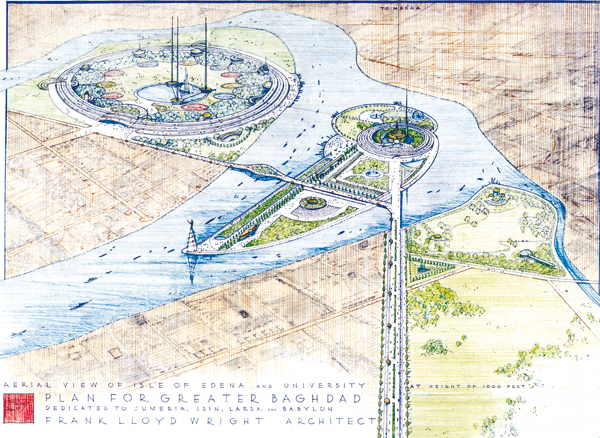Strata: Frank Lloyd Wright Designs Archaeological Museum for Baghdad

In the 1950s, Baghdad seemed poised to enter the modern age with a cultural enthusiasm rivaled only by its previous golden ages in antiquity. With a growing economy, a new university and a fairly tolerant government under King Faisal II, Baghdad was attracting some of the world’s leading architects to design the various civic, domestic and cultural buildings that any bustling new city would require.
Inspired by a 1957 visit to Baghdad and “The Arabian Nights,” the famed American architect Frank Lloyd Wright, age 90, enthusiastically drew up designs for an archaeological museum, a gallery for contemporary art, a bazaar, a post office and a university campus—some of which had already been assigned to other well-known architects. Wright’s plans featured fanciful “bulbous towers, ziggurating stairs and pointed spires,” as described by The Wall Street Journal’s architecture writer Julie V. Iovine. The image above right shows one of Wright’s color sketches of his “Plan for Greater Baghdad,” including the university and the opera house.
Of the 13 design proposals and 15 models currently on display at New York City’s Center for Architecture exhibit City of Mirages: Baghdad, 1952–1982, only six were ever constructed and even fewer are still standing. One of these few is LeCorbusier’s sports complex evocative of a tent in Eden and a spiraling minaret. Begun in 1978, 13 years after LeCorbusier’s death, it was completed in 1983 and renamed the Saddam Hussein Sports Complex.
None of Frank Lloyd Wright’s projects for Baghdad was ever built, and his plans are rarely shown in public.
Already a library member? Log in here.
Institution user? Log in with your IP address.

